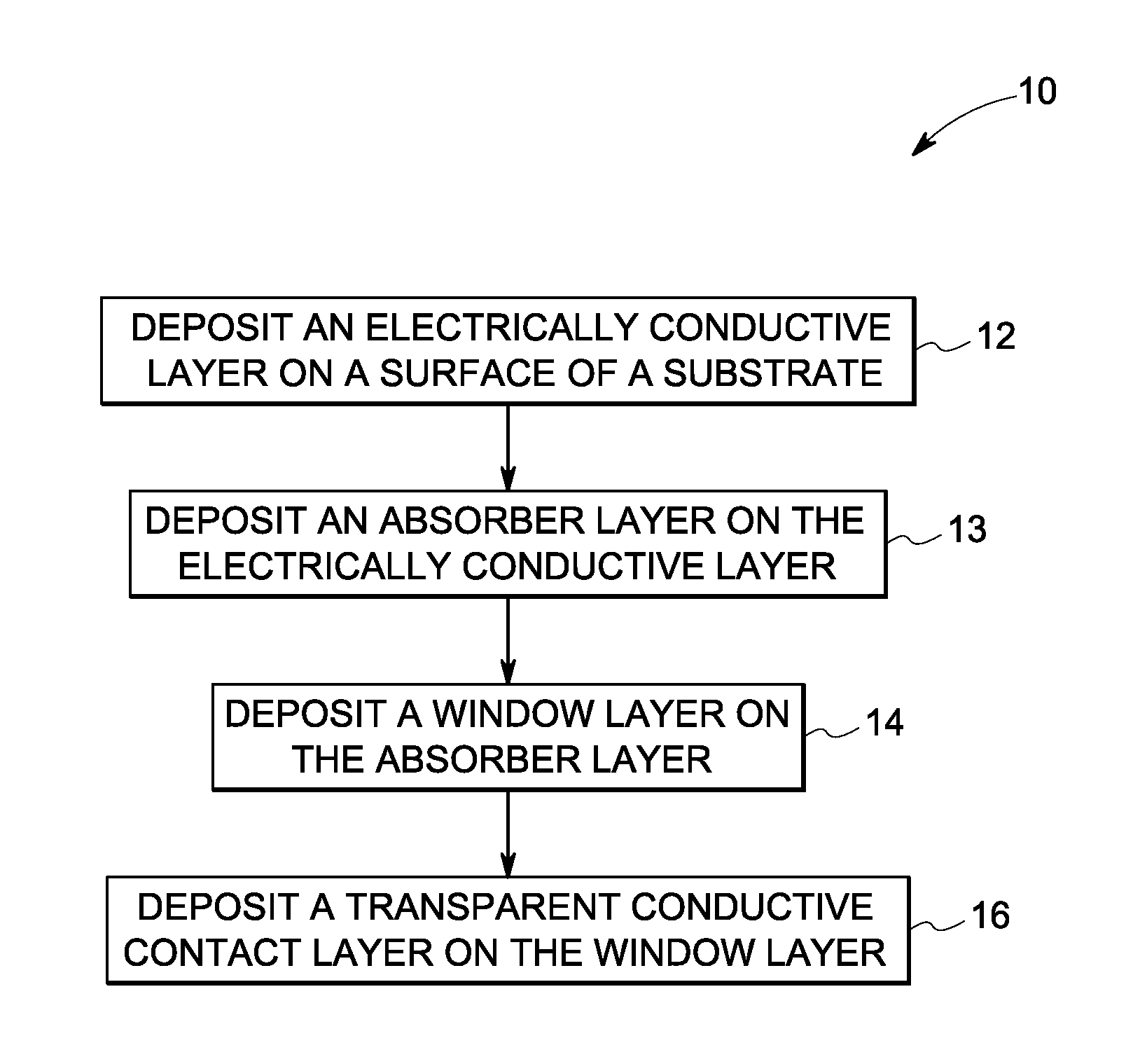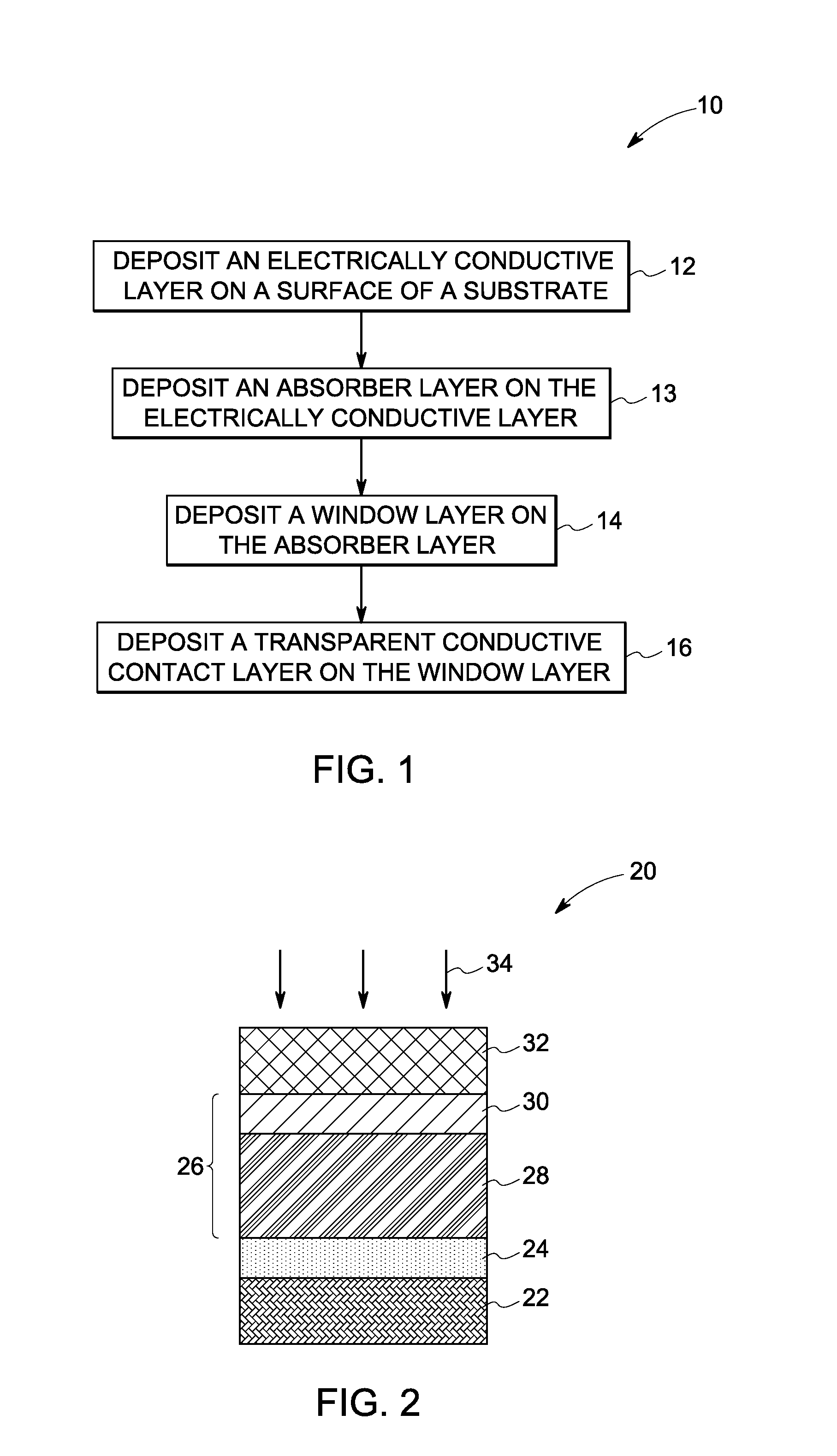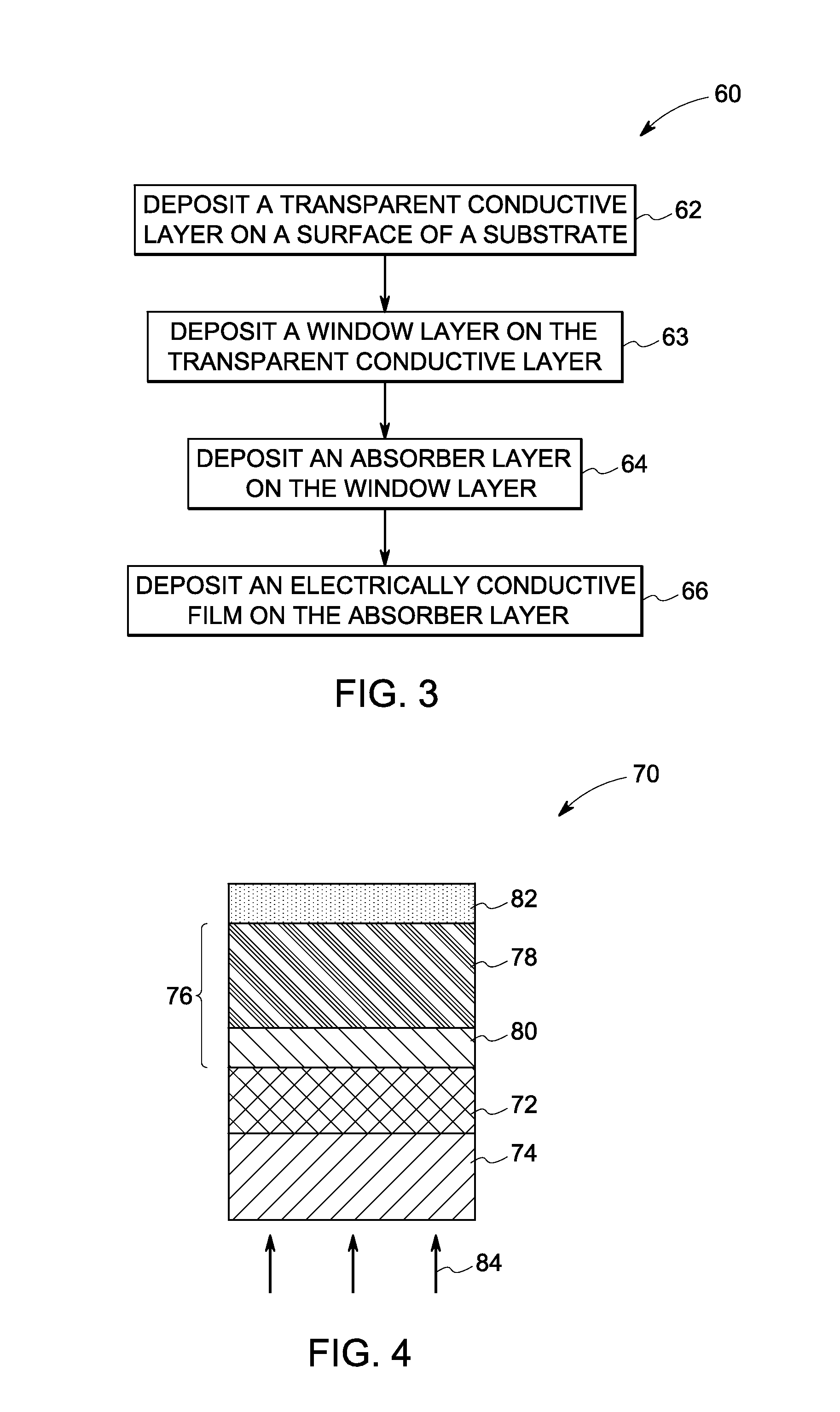Methods of Fabrication of Solar Cells Using High Power Pulsed Magnetron Sputtering
a technology of solar cells and pulsed magnetron, applied in the field of solar cells, can solve the problems of shunting of solar cells, deterioration of polyimide films commercially available, and difficulty in isolation layer
- Summary
- Abstract
- Description
- Claims
- Application Information
AI Technical Summary
Benefits of technology
Problems solved by technology
Method used
Image
Examples
Embodiment Construction
[0016]Embodiments of the present technique provide methods of fabricating diode structures, such as solar cells. The methods employ high power pulsed magnetron sputtering to deposit different layers of the solar cells. As will be described in detail below, in some embodiments, all or some of the layers of the solar cells may be deposited using the high power pulsed magnetron sputtering.
[0017]As illustrated in FIG. 1, a flow chart 10 illustrates a method of fabricating a solar cell. The method includes depositing an electrically conductive layer on a surface of a substrate (block 12). The electrically conductive layer provides ohmic contact to the solar cell. Although not illustrated, the electrically conductive layer may contain one or more layers. For example, the electrically conductive layer may contain a dual layer structure, where one layer provides stable contact with the semiconductor junction, and the other layer provides electrical conductivity. At block 13, an absorber lay...
PUM
| Property | Measurement | Unit |
|---|---|---|
| Fraction | aaaaa | aaaaa |
| Time | aaaaa | aaaaa |
| Time | aaaaa | aaaaa |
Abstract
Description
Claims
Application Information
 Login to View More
Login to View More - R&D
- Intellectual Property
- Life Sciences
- Materials
- Tech Scout
- Unparalleled Data Quality
- Higher Quality Content
- 60% Fewer Hallucinations
Browse by: Latest US Patents, China's latest patents, Technical Efficacy Thesaurus, Application Domain, Technology Topic, Popular Technical Reports.
© 2025 PatSnap. All rights reserved.Legal|Privacy policy|Modern Slavery Act Transparency Statement|Sitemap|About US| Contact US: help@patsnap.com



